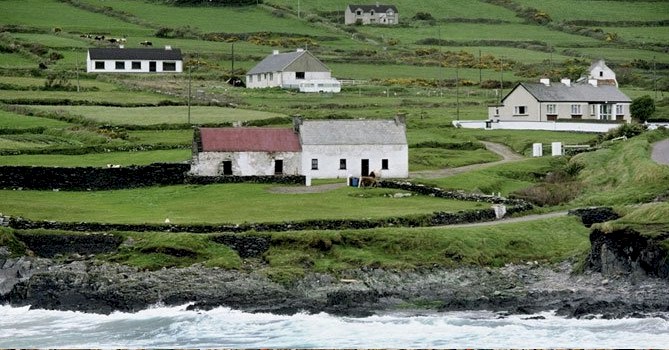
© 2015 50plus Senior News, All rights reserved.
The Search for Our Ancestry: Scotland, Northern Ireland, and the Republic of Ireland
Angelo Coniglio | Feb 9, 2012, 6 a.m.

I have discussed online genealogical research of the United Kingdom, so far covering England and Wales. Before proceeding with Scotland and Ireland, a clarification is in order.
The island of Ireland comprises two political divisions: Northern Ireland, which is part of the United Kingdom, and the Republic of Ireland, or the Irish Republic, which has been an independent nation since 1922. When I refer here to Ireland, I mean the whole island. More about this below.
In prehistory, Scotland was settled by an influx of settlers from Ireland, and the two peoples share many common traits. One of these, important in genealogical research, is the naming convention for children in a family, especially in the 1700s and 1800s.
The first son was named after the (child’s) father’s father.
The second son after the mother’s father.
The third son was named after the father.
The first daughter was named after the mother’s mother.
The second daughter was named after the father’s mother.
The third daughter was named after the mother.
Later children were named for their parents’ siblings, and often the child’s mother’s maiden surname was used as a second given name for some if not all children. This can be a valuable guide when the mother’s surname is otherwise unknown.
Information on the availability of Scottish and Irish sources may be found online; however, many of the actual records must be ordered and purchased in hard copy.
The “catalog” of the free Mormon site FamilySearch (https://familysearch.org) may be searched for the place in Scotland or Ireland to get a list of civil and church records (e.g., “Glasgow” or “Kildare”). Such searches show if microfilms are available for rental, to obtain photocopies of records at a nominal price. These may be copies of register indexes or of actual records.
However, the searches may be tedious and the results, though valuable, may be spotty. Many of the listings are for church records, so knowing your relatives’ ancestral town, religion, and parish at the start are invaluable.
Similarly at this site, you can “Browse by location” for “Europe” and then “Scotland” or “Ireland” to find a list of church or census records, and so on. These may be searched by an ancestor’s name and usually display transcribed details without an actual image of the document.
For Ireland, use this process and select “Ireland, Civil Registration Indexes, 1845-1958.” The same collection is available on Ancestry.com, which is a paid site but more easily navigated.
In 1922 the Republic of Ireland was created. Six of the nine counties forming the province of Ulster voted to remain part of the United Kingdom as Northern Ireland. This split affected the location of various records. Moreover, because England ruled Ireland for much of its history, many Irish records are found in English repositories.
There are thousands of Scottish/Irish genealogical websites, free and paid, and I cannot possibly list them all or even all the good ones. Search for them by typing “Scottish genealogy” or “Irish genealogy” into your Web browser.
The paid sites I mention are not endorsed by me but are presented only as a guide. The site Family Chronicle (http://familychronicle.com/10_scot_sites.htm) lists helpful Scottish genealogy sites, paid and free. The site Irish Genealogy Toolkit (www.irish-genealogy-toolkit.com) is an excellent free site that describes the location and access procedures for Irish records.
At GENUKI (http://genuki.org.uk/big/eng), each Scottish or Irish county, including both Northern Ireland and the Irish Republic, can be selected to access sources of various types of information. In Scotland and Ireland, as for the rest of the UK, a General Register Office (GRO) is the government agency responsible for civil registration.
The former Scotland GRO is now the National Records of Scotland (http://gro-scotland.gov.uk/). Ireland has a Northern Ireland GRO (GRONI) based in Belfast and a Republic of Ireland GRO, or GRO Dublin. Links for both Irish GROs can be found at Irish Genealogy Toolkit.
The actual records are contained in various hard-copy registers of the data. For Scotland and Ireland, indexes of birth, death, and marriage registers are available online through the links noted above. You must provide the person’s name, place information, and the register volume or other ID information found by your search to the appropriate GRO to order a photocopy of the actual record, which is sent by mail.
Generally, photocopies are available as “certified copies” or “research copies.” The former are necessary as proof of births, marriages, or deaths for legal purposes, while the latter are adequate for genealogical needs. The two types of copies are identical, with the exception that one bears an official stamp or seal, and the other doesn’t. The certified versions are more expensive than the research versions.
|
Write to Angelo at genealogytips@aol.com or visit his
website, www.bit.ly/AFCGen.
He is the author of the book The Lady of the Wheel (La Ruotaia), based on his genealogical research of Sicilian foundlings. For more information, see www.bit.ly/SicilianStory. |





